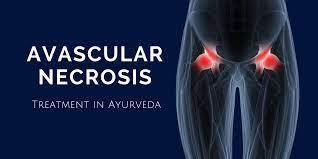#ayurvedictreatmentforavn
Explore tagged Tumblr posts
Text
Understanding Avascular Necrosis (AVN) and Ayurvedic Treatment Options

Avascular Necrosis (AVN), also known as osteonecrosis, is a medical condition characterized by the death of bone tissue due to a lack of blood supply. This can lead to the collapse of the affected bone and joint, causing pain, limited range of motion, and disability. AVN can affect various joints in the body, including the hip, knee, shoulder, and ankle.
Ayurveda, an ancient system of traditional medicine from India, offers holistic approaches to managing and treating health conditions, including AVN. Here are some Ayurvedic treatments for Avascular Necrosis and therapies commonly used for AVN:
Virechana: This is a detoxification therapy involving the administration of purgative substances to eliminate toxins from the body.
Basti: Basti involves the administration of medicated enemas to cleanse the colon and remove accumulated toxins.
Swedana: This is a sweat therapy where the body is exposed to steam or heat to promote sweating and eliminate toxins.
Panchakarma: Panchakarma is a comprehensive detoxification and rejuvenation therapy that combines various Ayurvedic treatments, including Virechana, Basti, and Swedana.
Ayurvedic Medications: Ayurvedic practitioners may prescribe specific herbal medications and supplements to manage pain and improve joint health.
Diet and Lifestyle Modifications: Ayurveda emphasizes the importance of a balanced diet and lifestyle tailored to an individual's constitution (Prakriti) and the imbalances (Vikriti) they are experiencing.
Yoga and Pranayama: Yoga and breathing exercises can help improve flexibility, reduce stress, and enhance overall well-being.
Meditation: Stress management techniques such as meditation can be beneficial in managing the pain and emotional aspects of AVN.
Shathayu Ayurveda Yoga Retreat is one of the Best Ayurvedic Retreat in India for AVN Treatment and their expert Ayurvedic doctors have worked for Effective Avascular Necrosis (AVN) Management and Healing, However, a reputable Ayurvedic retreat and its doctors should provide the following benefits:
Personalized Treatment Plans: Expert Ayurvedic doctors will assess your individual condition, constitution, and needs to create a customized treatment plan for your AVN.
Traditional Ayurvedic Therapies: They will offer a range of traditional Ayurvedic therapies as mentioned above, tailored to your specific condition.
Diet and Lifestyle Guidance: Ayurvedic doctors will provide dietary and lifestyle recommendations to support your healing process and prevent further deterioration.
Regular Monitoring: They will regularly monitor your progress and adjust the treatment plan as needed.
Holistic Approach: Ayurvedic treatment considers the mind, body, and spirit, aiming to address the root causes of the condition and promote overall wellness.
Safety and Professionalism: Reputable Ayurvedic retreats ensure that treatments are administered safely by trained and qualified practitioners.
Before seeking treatment at any Ayurvedic retreat or with any Ayurvedic doctor, it's essential to do thorough research, check their credentials, and consult with them to discuss your condition and treatment options. Additionally, it's wise to consult with a conventional healthcare provider to get a comprehensive view of your condition and explore all available treatment options. Always prioritize your safety and well-being in your healthcare decisions.
#ayurveda#health & fitness#ayurvedictreatment#ayurvedicmedicine#avn treatment#ayurvedaforavn#ayurvedictreatmentforavn
0 notes
Text
The steps of Elite Ayurveda's ayurvedic treatment for avascular necrosis.

The steps of ayurvedic treatment for avascular necrosis are as follows:
1) Vata dosha balance: Because vata dosha impairs bone health, it must be corrected. It entails pharmaceutical indulgence and lifestyle adjustments.
2) Kapha dosha balance: As Kapha dosha produces aberrant tissue growth that clogs channels, treatment is important. It entails making dietary adjustments and engaging in physical activity.
3) Deepana: It entails using drugs to calm digestive fire and enhancing the ability of digestive fire to balance other doshas. These medications also aid in boosting the digestive process' ability to burn through fat and remove toxins while nourishing it to the fullest.
4) Pachana: In order to prevent ama from building up in channels, ama that is created as a result of poor digestion is also placed into place.
5) Rukshana: This is a drying therapy that aids in clearing obstructions in blood vessel channels and also causes bodily parts, including bones, to become more compact.
6) Panchakarma: Snehana, virechana, and vasti treatments are used in panchakarma, a detoxification treatment. This procedure is particularly successful in treating avascular necrosis.
7) Additional treatments include massage, lubrication with herbal oils, dhanyamla dhara (steam pouring), udwarthanam, sneha dhara, lepa, upanaha, etc. Depending on a person's body composition and degree of degradation, all of these treatments are tailored to them.
0 notes